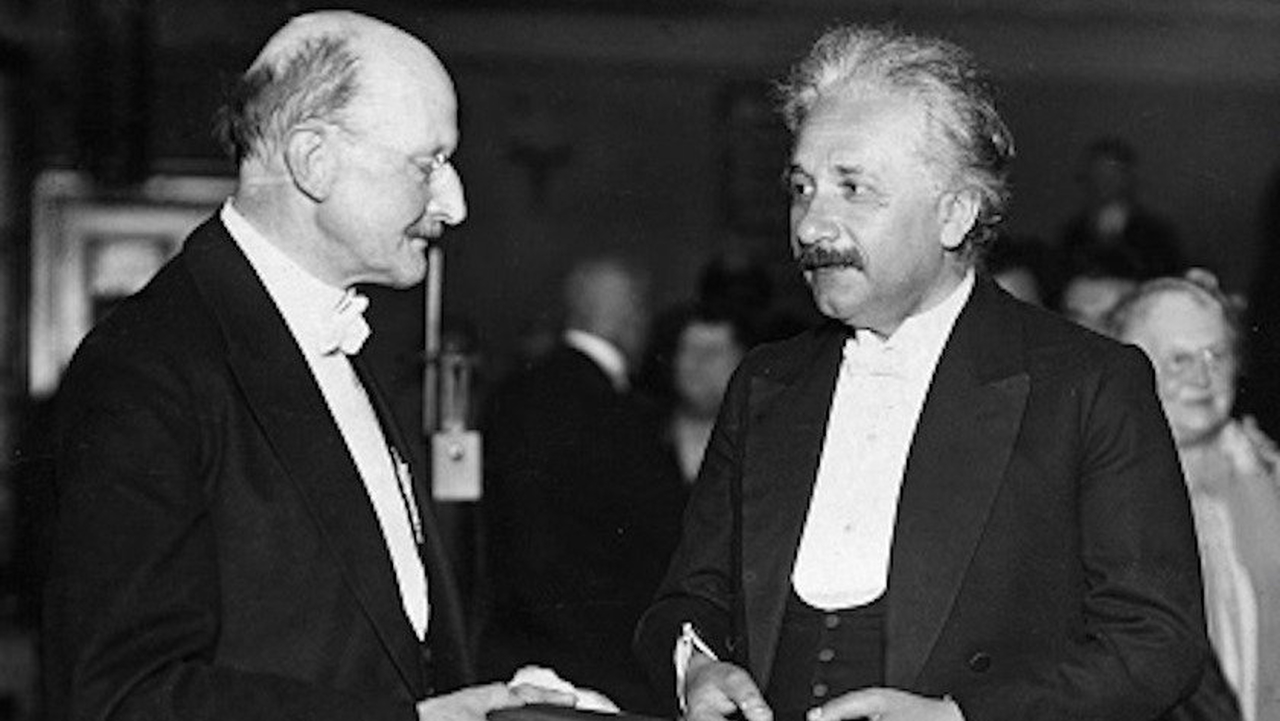For those of us old enough to remember vinyl records, we might recall that when there was a scratch on the album, the needle would sometimes get stuck in the groove. The same sound or lyrics would keep repeating. In the groove, the tone arm couldn’t find its way into the next groove. This is exactly what happens with our thoughts. They tend to keep reiterating the same messages, time and again. When they do so, we summon old memories and feelings and we become stymied in trying to change.
The replay of old thoughts and feelings indicates that we aren’t truly present. The past is not dead in these circumstances, but alive and kicking in the present as we continue to replicate the past. This is such a wasteful way to live our lives as we move from moment to moment – wanting for change – but not understanding how to achieve it. The continuous repetition of old thoughts and feelings robs us of new experience. As well, it deprives us of the discovery of new ways of being. The groove is where fear reigns supreme. Coming out of the groove is where self-actualization appears.
I have been looking at this dilemma for some time now and have developed a method to help people liberate themselves from the grip of the groove. To that end, I have developed a process, which I call Emergent Thinking, whereby we can learn to see the habitual thoughts that trick us into false realities. Learning to observe thought, rather than attaching to and becoming the thought, is where liberation commences.
If I can’t see the thought, I won’t be having a thought – the thought will be having me!
If you have carried a thought like “I’m not good enough or smart enough,” you don’t see it as a thought; you accept it as the truth. It becomes your dominant belief and scripts your experiences and life dramas. That is where thought tricks us. The liberation comes from being able to reflect that it’s only a thought.
The difficulty we encounter in disengaging the thought is due to its automatic nature. Before we have an opportunity to take notice of the thought, we’ve already become the thought. But we can learn to become more alert and slow down the process, so that we may see the thought more clearly. It’s almost like seeing it coming in slow motion. We quickly learn how to accomplish this on physical levels.
Just consider the sport of tennis, and let’s metaphorically equate thought with being the tennis ball. In order to play well, we seek to anticipate the arrival of the ball on our side of the net well in advance of it coming. We see our opponent’s positioning and footwork, their racquet movement and the position of the ball. As the ball approaches the net in its return to us, we’re fully anticipatory. We’d hardly wait until the ball was inches from us before we began to react. Anticipation and awareness are fundamental in tennis or any sport. And so we train ourselves in this awareness and time slows in a relative sense as we come into this zone of awareness.
The flight of the ball seems much slower to the player on the court than to the spectator in the stands. Time becomes relative. The very same thing can be accomplished with thought as we learn to see it in advance of becoming it. This process will be discussed in greater detail in my forthcoming book, Emergent Thinking, but is illustrated here simply to advance this thesis.
Old Thought Defends its Territory
The old thinking defends its territory, so to speak, as it clings to maintain control and dominates our beliefs and actions. This is what the physicist David Bohm referred to as the literal nature of our thought. The deception is that our thoughts instruct us about an objective truth rather than a subjective perception. As such, thought constructs reality and reports it. And in so doing, it obfuscates the fact that it is simply representing a subjective perception.
All ownership of the thought is lost as we merge with the thought. Consider the difference between “she is really being unfair to me and taking advantage” as opposed to “I’m having a thought, which is telling me that she’s treating me unfairly.”
In reality, our thoughts are perceiving – if not constructing that truth – and imprisoning us within those confines. This dilemma is illuminated by contrasting worldviews. In the mechanistic paradigm, reality is comprised of separate objects and events. As such, there is a core belief in objectivity (comprised of objects) as one can stand apart from a separate and discrete reality and observe it. It’s “out there” and you can objectify it. This is typically how our thoughts operate, reporting in on the truth out there.
In the emerging participatory worldview, separation is questionable and all parts participate in a mutually constructed reality. Hence, objectivity falls apart, for it requires separation to be objective. From this vantage, thought should be seen as subjectively representing what we see out there, whereby we participate in that observation. This would be known as participatory thought. Literal thought might instruct us as follows: “I’m such a loser, why can’t I ever do anything right?” This thought is informing us as to the objective truth. Participatory thought would sound like, “ I’m having a thought (perhaps old) that is telling me once again that I’m a loser.” (You might also want to consider if that thought is a replay of messages you received about yourself in childhood.)
The nature of participatory thought leaves us free to reflect upon and consider the thought, as opposed to automatically becoming the thought. This is a vital part of liberating ourselves from the deadness of habitual thought – tirelessly repeating the past and opening to the potential of new thinking. Participatory thought often begins with establishing subjective ownership, i.e., “I’m having a thought.” If we simply launch into the thought, it is claiming objective truth. Once we establish that our thoughts are subjective and participating fully in that which they are reporting, we open to the shift of mind that reaches new potentials.
When we learn to see the thought/feeling arise and witness it, rather than become it, we approach a new level of authenticity. It permits us to be responsive rather than reactive, for it allows for the passage of the extra moment required for reflection. When this occurs, there emerges an “I,” which is far larger than simply being your thought/feeling. This process feels as if you are transcending the common and moving into a deeply sublime realm, hovering above the knee jerk reactivity of ordinary life. And as an added gift, it facilitates much healthier communication and supports our relationships.
In order to come out of the groove, or ungroove, requires the ability to invite in and embrace the dissonance of new thinking. New thinking is most unfamiliar and although we may say we seek it, there’s an entrenchment in the comfort of the familiar zone. What we seek in terms of change requires that we embrace what is unknown. As noted earlier, the dilemma is that if we avoid what’s uncomfortable or awkward then we remain in the habitual groove. If the new thinking and behavior feels uncomfortable as we move toward it, then we have a signal that we are moving us out of the groove. This experience is what we commonly refer to as change. Learning to come out of the habitual groove enables us to consciously choose differently and live our lives in a more participatory and engaged manner. This shift from the automatic and habitual nature of thought/feeling can be described as a movement from rigidity toward plasticity. The more malleable our minds, the greater the movement will be from the rigidity that denies us growth and emergence.





The problem, as I see it, occurs when we are attacked from all sides. Problems don’t usually come alone, but with others not related to the first. One faces battles on all sides and it is exhausting.
Good advice, but often one has not the energy for it. It would put things apart from ourselves and the distance might favor a change in action.
Boy, I know this one all too well and it has become overwhelming in my life. So, I decided to walk straight through the middle of it all. If I told you all that I have and am dealing with you’d probably just shake your head in disbelief.
Now, what I have learned from this blog is an epiphany! For the first time in 20 years I know how to put my thoughts into positive action and get rid of the ghosts of my past experiences. Needless to say, the proverbial light is now visible at the end of the tunnel.
…sort of like “dynamic vs. static”
Are you referring to the relationship with our thoughts?
Mel
I am a volleyball instructor and often face a common situation with in the physical skills relm. Because of habits that form muscle memory, players often are unaware that they are performing a skill incorrectly. They are faced with 2 battles. 1) to “unlearn” the muscle memory and replace it with a new memory 2) just as difficult, to be willing to change something that may not produce the best results because it is comfortable. Fear of change.
Seems to have a fair amount of commonality to what you’re saying.
It certainly resonates Jeff.
What holds people back is often not the discomfort of change, but the fear of the result. As all therapists know, we cannot determine the outcome of change in advance. “I will only change if you can guarantee that I will not become x.” How often have we heard that in our consulting rooms? Fear of the unknown is pretty strong demotivator in all walks of life! And to be honest, many people never manage to conquer that fear. Grooves – however uncomfortable they are – are often perceived to be safer than the open road.
Richard, quite true. I’m fond of saying, “freedom from the known.” For that’s ironically where we struggle.
One problem I still see with the new way of thinking, and this just may be my own defensive thoughts avoiding change, but what if our particular damaging thought is in fact truth? How then can we say it is only a thought, if it is a fact established by more than my own thoughts? How then would we negate the damaging effects of thinking it all the time?
Sue – my view is that it’s often not facts that are the problem but our interpretation of them. So remove all value judgements and emotionally-loaded words from the thought and look at the actual fact. So, “I’m a failure at relationships” becomes “I’ve never had a successful relationship”. When you get to the plain underlying facts, you are left with a state that is either potentially changeable or not changeable. if it’s changeable, then work on changing it. If it is truly not changeable, then work on acceptance and questions such as “Given x that I cannot change, what would be the best possible outcome for me? How might I achieve that?”
Richard,
What are we using to determine the “fact.” I do agree about how we potentially change the issue, yet question that which you surrender to not being able to change.
Mel – for example, a client who believes they can find no meaningful existence because they are HIV positive. The negative belief would be “My life is over.” Being HIV positive is an unchangeable fact; it will also be objectively true that certain doors will be closed to them as a result,and they may now be faced with being forced to give up certain dreams & ambitions. You cannot challenge the fact of their HIV status, however you can challenge their interpretation that their life is over. So the question then becomes “Given that I am HIV positive, how might I find some degree of purpose, meaning and happiness in life?”
Sue, your damaging thought indeed create that “truth” It becomes a self-fulfilling prophecy. Thought is never an objective observer, but a subjective construction.
It’s not about negating those thoughts. It’s about changing our perception and getting the stuck needle out of the repetitive groove.